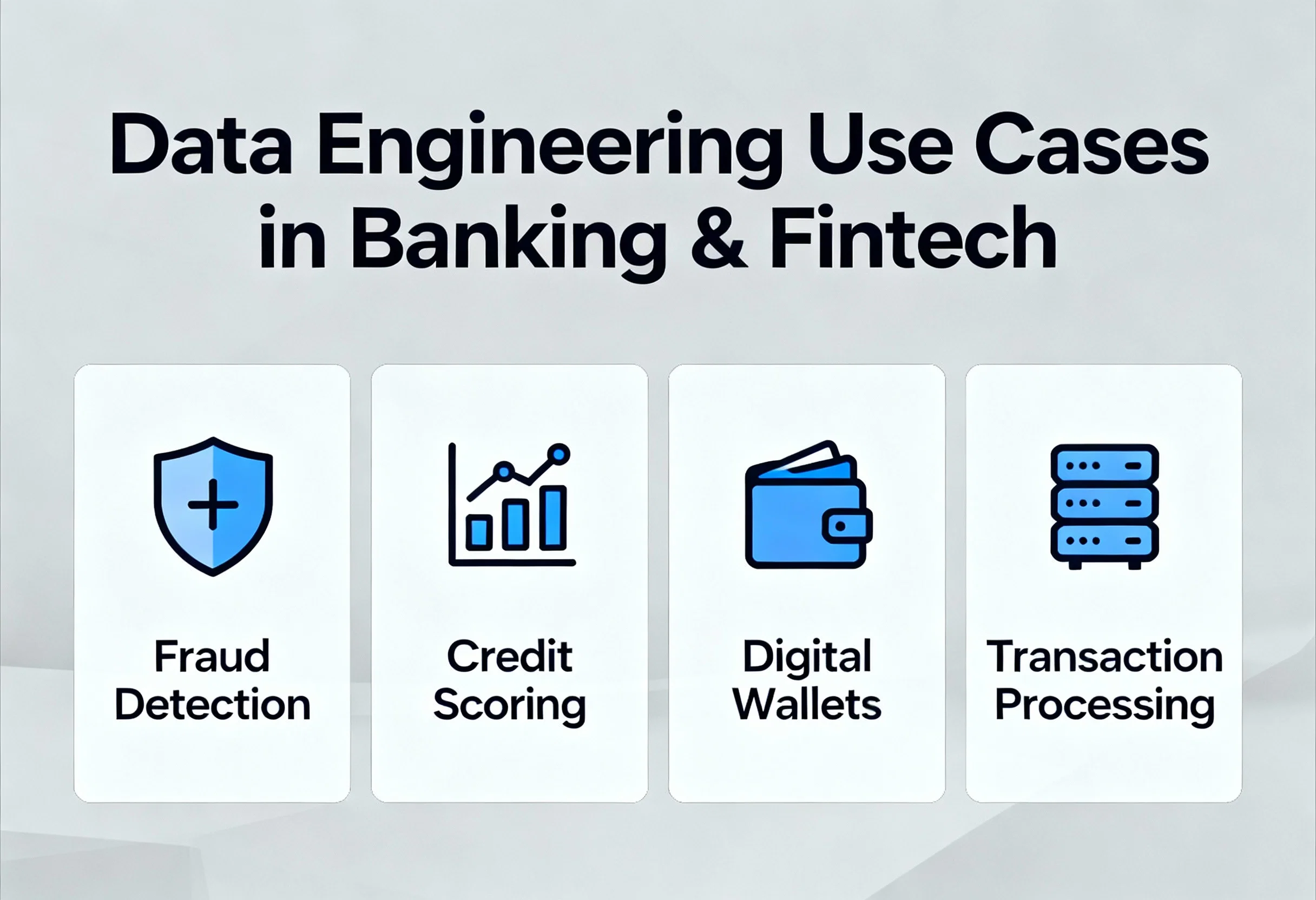
Data Engineering in Banking vs FinTech – Key Differences and Future Trends
How AI is Revolutionizing Exam Monitoring and Assessments in the Digital Era Home Document Data Engineering in Banking vs FinTech Key Differences and Future Trends
Key Differences and Future Trends

In today's digital-first financial world, data engineering has become the backbone of innovation, security, customer experience, and regulatory compliance. Banks and FinTech organizations operate in the same industry, yet their approach to data infrastructure, systems, and engineering practices varies significantly.
At Nemo IT Solutions, we work closely with both traditional financial institutions and modern FinTech innovators. This gives us a front-row view of how data engineering strategies shape the future of finance.
In this blog, we will explore the core differences between data engineering in banking and FinTech, the technologies that power them, and what the future looks like as financial services evolve.

Banks have operated for decades with legacy systems, strict regulations, and well-established processes. Their data engineering priority is stability, compliance, and security at scale.

FinTechs emerged in the cloud era. They are agile, tech-driven, and innovation-focused, aiming to disrupt financial models with digital-first products and hyper-personalized experiences.
| Aspect | Banking | FinTech |
|---|---|---|
| Infrastructure | Mainframes, on-prem systems + hybrid cloud | Cloud-native platforms |
| Data Storage | Legacy data warehouses | Data lakes, lakehouses |
| Deployment Model | Slow, controlled releases | Continuous delivery & automation |
| Tools | IBM, Oracle, Teradata | Apache Spark, Kafka, Snowflake, Databricks |
Banks still rely heavily on legacy systems for core transactions. FinTechs start modern — adopting microservices, containerization, serverless, and real-time streaming.
| Category | Banking | FinTech |
|---|---|---|
| Regulation | Extremely strict (Basel, RBI, FFIEC, GDPR) | High but more flexible |
| Data Handling | Highly controlled, full audit trails | Cloud-based governance + fast updates |
| Approach | Compliance-driven | Innovation with compliance |
Banks build around regulation. FinTechs innovate first and then embed compliance frameworks.
| Focus | Banking | FinTech |
|---|---|---|
| Processing Mode | Batch processing + periodic real-time | Real-time streaming & AI-driven decisions |
| Customer Data | Deep historical financial records | Behavioral + transactional + alternative data |
| Personalization | Conservative, need-based | Hyper-personalized digital journeys |
FinTechs thrive on real-time systems — from instant lending to payment intelligence. Banks are catching up through digital transformation programs.
| Factor | Banking | FinTech |
|---|---|---|
| Security Layers | Multi-layer traditional models | Zero-trust, AI-based fraud detection |
| Risk Appetite | Very low | Balanced with innovation |
| Ecosystem | Closed systems | APIs, open banking, integrations |
FinTechs adopt API-first security models and advanced fraud detection using ML.
| Area | Banking | FinTech |
|---|---|---|
| Culture | Structured, process-centric | Agile, product-first, innovative |
| Data Teams | Large but slow to adopt new tech | Smaller, highly skilled, rapid adoption |
| Skills Focus | Database management, risk systems | AI, ML, big data, cloud ops |
FinTech data engineers often wear multiple hats — data pipelines, ML ops, analytics, product integration.

AI-based scoring, risk models, fraud prediction, and automated decisions will define financial services. Data engineers will increasingly build AI-ready data pipelines and ML monitoring systems.
Banks are accelerating their move from on-prem to cloud and hybrid cloud. FinTechs will continue to expand into serverless & microservices-based architectures.
Cybersecurity, zero-trust models, blockchain-based identity, and secure multi-party computation will rise. Security-centric engineering is becoming mandatory, not optional.
Banks will adopt open APIs, enabling trusted partners and digital innovation. FinTechs will integrate more with banks for compliance and scale.
Real-time KYC, payments, risk scoring, fraud detection, and credit decisions will be standard.
Both industries will shift to decentralized data platforms enabling scalability, flexibility, and self-service analytics.
At Nemo IT Solutions, we empower financial organizations with:
We bring industry-specific expertise to help banks and FinTechs build scalable, secure, real-time data ecosystems.

While banks prioritize stability, compliance, and controlled transformation, FinTechs emphasize innovation, speed, and real-time intelligence. Both industries require strong data engineering foundations — the difference lies in approach, culture, and speed of adoption.
As regulations evolve and customer expectations rise, data will shape the future of financial services. The winners will be organizations that combine banking trust with FinTech innovation.

How AI is Revolutionizing Exam Monitoring and Assessments in the Digital Era Home Document Data Engineering in Banking vs FinTech Key Differences and Future Trends

How AI is Revolutionizing Exam Monitoring and Assessments in the Digital Era Home The education landscape has undergone a dramatic transformation in recent years, with

How AI & Tech Growth Are Driving H-1B Visa Demand in 2026, and the Impact of Post-Trump Immigration Policies Home The global workforce is experiencing
Give us a call or fill in the form below and we’ll contact you. We endeavor to answer all inquiries within 24 hours on business days.